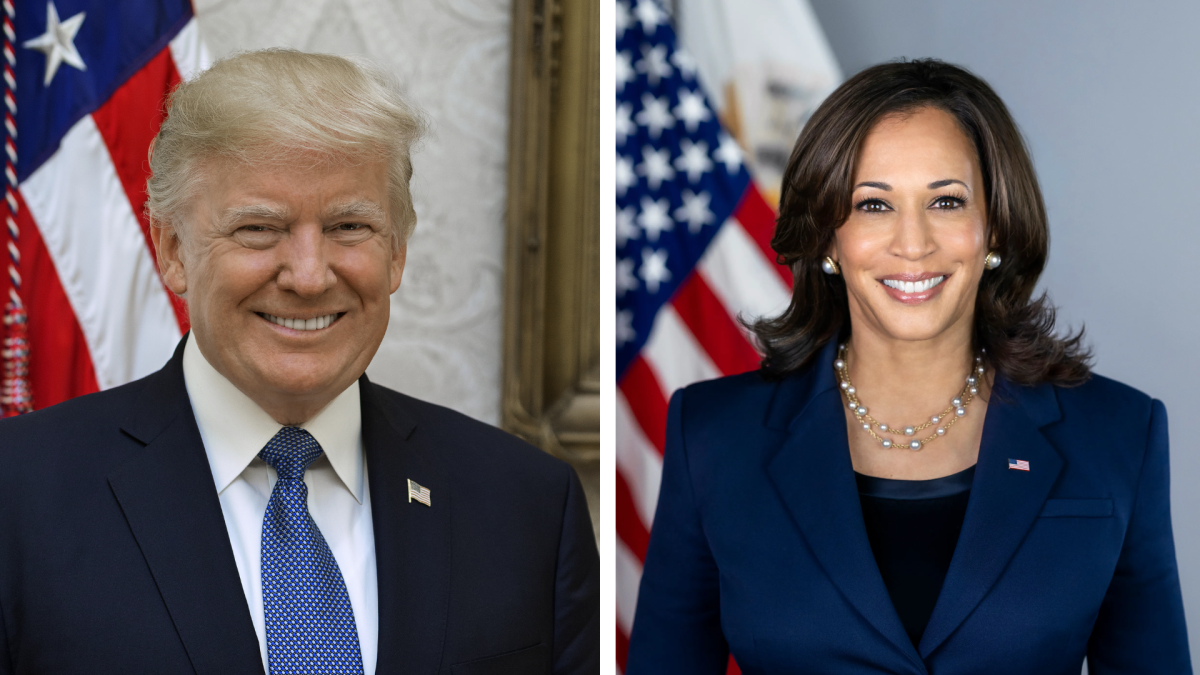The 2024 presidential election will be remembered as a pivotal event in recent history. It marked a major inflection point in American history and will shape the nation’s trajectory for decades to come.
On Nov. 5, Former President and now President-elect Donald Trump defeated Vice President Kamala Harris, winning both the popular vote and the Electoral College. Republicans are hailing it as a historic victory, as the GOP had not won the popular vote since George W. Bush’s re-election in 2004. Both campaigns made strong efforts to energize their bases while attempting to sway undecided voters.
President-Elect Donald Trump announced his candidacy for the 2024 presidential election in November 2022. His campaign initially focused heavily on attack ads, with in-person campaigning beginning later. Trump emphasized claims that the 2020 election was “stolen” and promised tax cuts, border security and “zero” inflation early on. As his campaign took shape, his platform became centered around restricting abortion access, ending the Affordable Care Act, installing heavy tariffs, enacting mass deportations, withdrawing from climate deals and closing the Department of Education alongside many other federal agencies. After securing the party’s nomination at the Republican National Convention (RNC) in July, Trump announced junior Ohio Senator J.D. Vance as his running mate, and the two launched a nationwide campaign.
Similarly, President Joe Biden announced his re-election bid on April 23, 2023, a decision met with skepticism about his capacity to serve another term. While the Biden-Harris administration had many notable achievements, including spearheading one of the most significant economic recoveries after the pandemic and reducing the cost of prescription medications, inflation and foreign policy missteps overshadowed these successes.
Concerns about Biden’s age and mental acuity intensified as his first term progressed. After his performance during the first presidential debate against Trump, doubts about his ability to serve a second term grew. On July 24, Biden announced he would suspend his campaign, endorsing Vice President Kamala Harris to succeed him. On the same day, Harris declared her candidacy, embarking on a historic bid for the presidency.
Harris had to quickly assemble her campaign, relying on the framework left by Biden. Despite a compressed timeline of just 107 days, Harris energized voters with a grassroots campaign that was bolstered by endorsements from celebrities and cultural icons. One notable campaign strategy was her collaboration with pop artist Charli XCX, whose popular album “Brat” was used in the campaign’s outreach materials. This approach appealed to younger audiences and aligned with Harris’s broader efforts to engage voters on platforms like TikTok, Instagram and Twitter. By using targeted social media strategies, her team successfully reached a younger demographic.
Her platform, which emphasized reproductive rights, affordable housing, and lowering grocery and drug prices, resonated with many voters. On Aug. 5, Harris secured the necessary delegate endorsements to become the Democratic nominee and selected Minnesota Governor Tim Walz as her running mate. In August, she officially accepted the nomination at the Democratic National Convention (DNC) and continued her campaign with strong momentum. Her performance in the second presidential debate against Trump earned her a massive boost in polls.
Despite this, several challenges proved insurmountable for Harris. As Election Day approached, her lead in swing states narrowed, with the economy remaining a critical issue. Many voters, especially in swing states, believed the Biden administration had failed to address inflation effectively. Additionally, the administration’s handling of the Israel-Palestine conflict raised concerns, with Harris struggling to articulate a distinct approach from Biden’s policies. These factors undermined her campaign’s ability to build trust among undecided voters.
Both candidates concentrated their efforts on key battleground states: Democrats targeted Wisconsin, Michigan, Georgia and Pennsylvania, while Republicans focused on Arizona, Nevada, North Carolina and Pennsylvania. Bomb threats in Democratic strongholds on Election Day temporarily delayed voting in some precincts but did not result in harm. These threats were later traced to Russian sources and are currently being investigated.
Ultimately, Trump emerged victorious, securing 77,259,579 votes and 312 electoral votes. Harris garnered 74,993,503 votes and 228 electoral votes. The Associated Press called the election for Trump at 5:34 a.m. ET on Nov. 6. Although Harris narrowed the popular vote margin as results from western states like California and Oregon came in, Trump still maintained a 1.8% lead.
Trump won all seven swing states and made gains in traditionally Democratic counties. His success can be attributed to Harris’s limited campaign timeframe, her perceived alignment with Biden’s policies and voter discontent with the economy. Swing state voters, particularly blue-collar and middle-class individuals, felt the economic recovery under Biden had not reached them, driving support toward Trump. While issues like reproductive rights, democracy and healthcare were significant, inflation dominated voter concerns.
Trump’s win also reflected broader trends, with conservative movements gaining momentum globally. Republicans also flipped numerous congressional seats, signaling a rightward shift in the U.S. political landscape.
Despite the loss, Democrats are looking ahead to 2026, when all 435 House seats and 33 Senate seats will be up for election. Republicans will aim to keep their majority in Congress, but it is expected that Democrats will strongly contest many seats. Additionally, Trump’s performance for the next two years will play a major role in how the 2026 elections shape up for Republicans. Needless to say, the pendulum of American politics will continue to swing back and forth.





